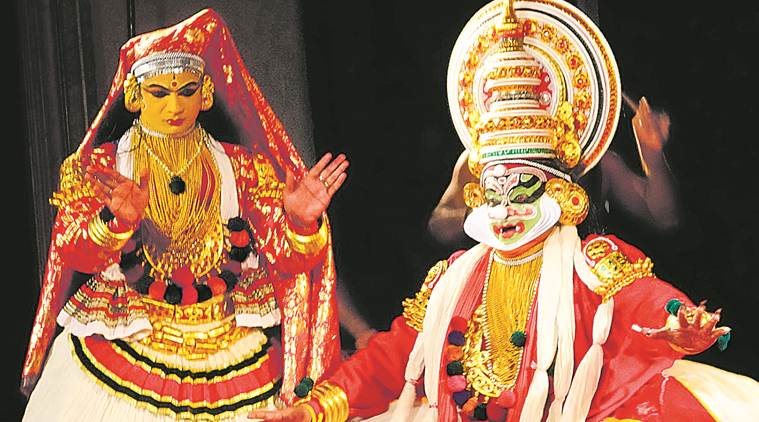
In 1989, choreographer Annette Leday from France and an Australian philosopher and playwright David McRuvie decided to bring together one of William Shakespeare’s most powerful plays, King Lear, and one of India’s most powerful performing arts, Kathakali. Kathakali-King Lear became a point of reference in intercultural performance discourse and also played at the Shakespeare Globe Theatre in London in 1999. Thirty years later, the duo has revisited the piece with artistes, who have become mature seniors, and a new generation of young performers.
As part of the Delhi International Arts Festival, Alliance Francaise de Delhi presented the work to a packed house at the India Habitat Centre recently. It was also presented in Mumbai and Pune, among other cities. Kathakali-King Lear’s soaring tragedy comes from the main plot alone. Rid of the parallel narratives of Shakespeare’s original, the piece highlights the themes of kingship, dowry, marriage, renunciation of the world, battle and death that are equally part of the Kathakali vocabulary.
Leday adds that the work has changed little in the revival. “We have tightened it, and new members have developed their characters in slightly different ways,” she says. Leday first watched Kathakali in Paris, when it was organised by Milena Salvini, who had invited Sadanam Nanda Kumar to give a series of classes. Later, she studied at the Sadanam and Kalamandalam institutions in Kerala from 1978 to 1984. “Kathakali is a wonderful performing art that combines dance as well as theatrical techniques. It brings a larger-than-life dimension to any character. Kathakali has been my main source of inspiration for my creative work over the years,” says the choreographer. Her other works include La Sensitive (1992), which involves five Kathakali dancers and is inspired by PB Shelley’s poem The Sensitive Plant and an ancient Kerala ritual, the Kalamezhuthu; and Trans-Malabar (1995), which had five Indian dancers and revolved around the lively and difficult interaction between tradition and modernity in a country undergoing profound mutation. “In the works that followed Kathakali-King Lear, I have introduced selected movements from Kalaripayattu, Theyyam and Krishnanattam,” says Leday.
In Kathakali-King Lear, Peessapilli Rajeev, who has been performing Kathakali for 40 years, takes Lear through an arc of emotions that peak in the poignant last moments as the king stands before the dead body of his daughter, Cordelia. Playing the Fool is Manoj Kumar, a Kathakali actor and playwright, whose role is a novel character-type, developed from the vidushaka of Koodiyattam. “We have attempted to keep to the traditions and spirit of Kathakali but there are innovations, which we hope, make the play interesting for a Kathakali audience. Another stand-out example is the fortissimo percussion sequence to evoke the iconic storm scene, which is central to the action,” says Leday.
Was it a challenge to adapt Shakespeare’s poetry for the performance? McRuvie says that King Lear is different from Shakespeare’s other works, such as Hamlet. “By this time, Shakespeare often achieved a sort of prose simplicity. Many of the greatest lines of the play are in prose. I wrote the adaptation in English prose, and this was translated very closely into Malayalam verses.”

No comments:
Post a Comment